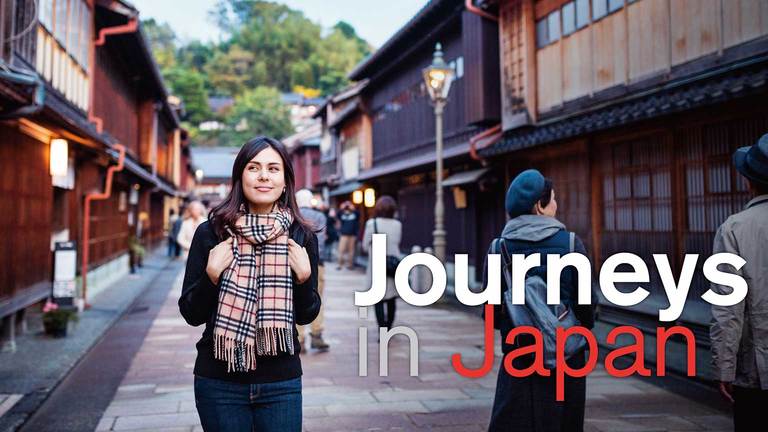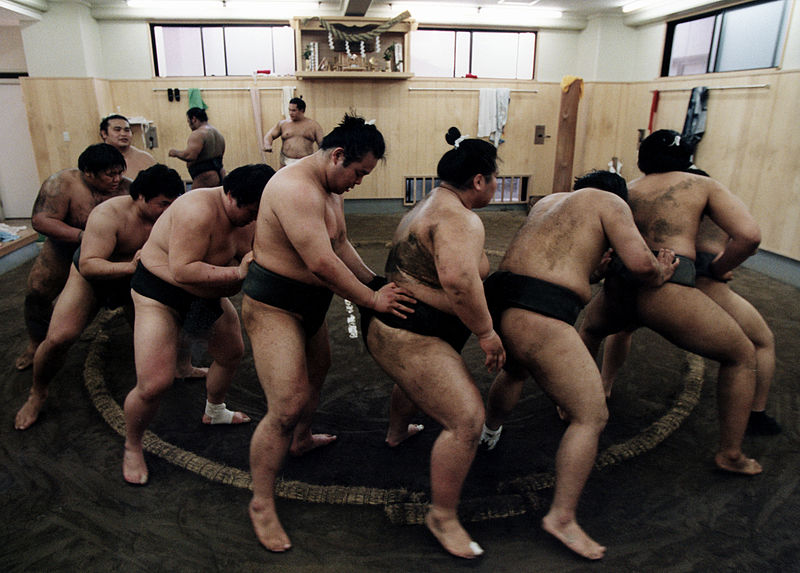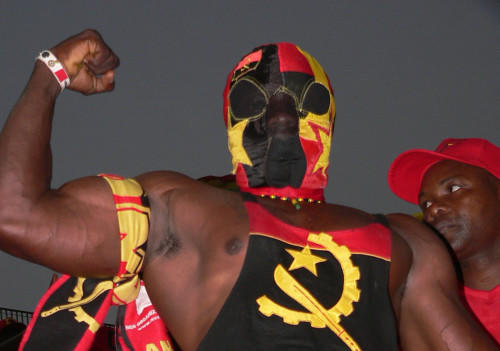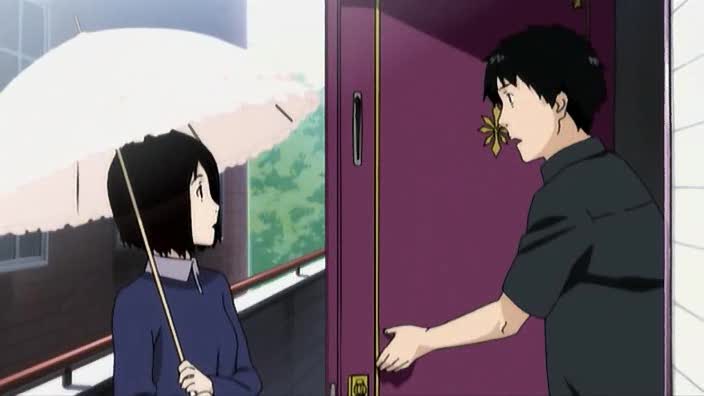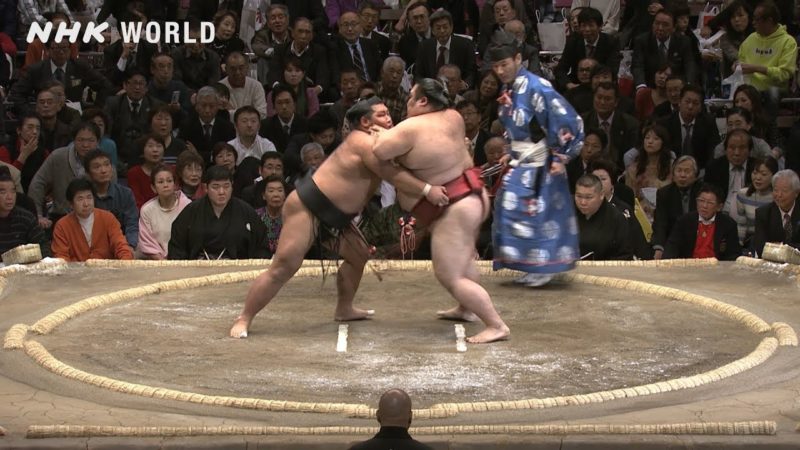 I’m not one for sports. American football puts me to sleep. Football–soccer–does the same. I’ve never really found a sport I could get into. Too many commercial breaks. Too many rules. I’m a bit soured to sports because of the focus my hometown placed on basketball and American football. The arts were always cut before the school touched the sports programs.
I’m not one for sports. American football puts me to sleep. Football–soccer–does the same. I’ve never really found a sport I could get into. Too many commercial breaks. Too many rules. I’m a bit soured to sports because of the focus my hometown placed on basketball and American football. The arts were always cut before the school touched the sports programs.
On a whim one evening, I watched Grand Sumo Highlights on NHK. If you don’t know about NHK, it’s a Japanese public broadcasting station. It televises travel shows, cooking shows, and other broadcasts for people who want to travel to Japan or have an interest in the country. Some shows, like Kawaii International, focus on an aspects of otaku culture. I rather enjoy Imagination, an anime and video game preview show. Their interviews with mangaka and behind the scenes looks are often interesting.
But in any case, I started watching sumo from the beginning of a tournament for the first time. It immediately grabbed my attention. Highlights focuses on the top-tier matches of each day, cutting all the ceremony and fanfare that pads sumo matches. Matches are fast. The longest will last perhaps just over a minute. The speed of the game and the simplicity of the rules grabbed me.
In sumo, the goal is to force your opponent out of the dohyo, or ring, or make him touch the ground with anything besides the soles of his feet. Rice-straw bails mark a ring set up on a raised clay platform that built from scratch for each tournament. Sumo started as a Shinto ritual and evolved into a sport. It retains most of the original rituals, which gives sumo its character.
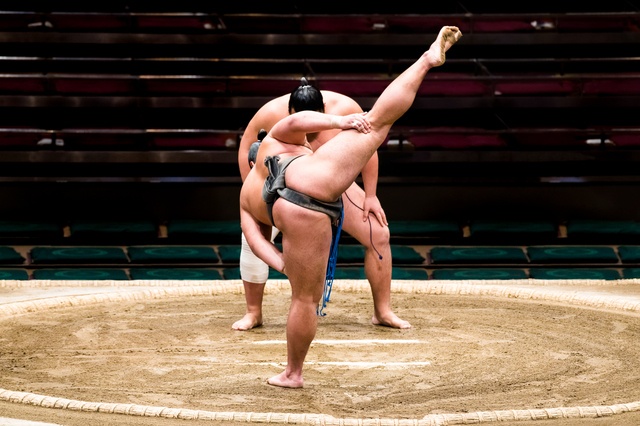
For a Westerner, most of these ritual seem odd. But they keep the sacred nature of the sport. For example, at the start of each bout, the wrestlers cast salt into the ring to purify it. Even the famous sumo stomp is designed to chase out evil spirits. Interestingly, despite how much Shinto influences sumo, most wrestlers in the tournaments I watch come from other countries: Brazil, Georgia, Mongolia, and other countries.
Many of the current yokozuna, the highest rank in sumo, are Mongolian. It’s neat to see how international even sumo has become.

As for the sport itself, wrestlers shove and slap and throw each other to reach their victory. Tochinoshin, who comes from Georgia, is a powerhouse. He lifts and carries his opponents to the edge of the ring. It’s amazing to see. It’s a mistake to believe these guys are just fat. Many of them can do back flips. I didn’t believe it either until NHK’s Sumopedia showed a few of them doing it. Sumo wrestlers are fast and have more in common with power lifters than with couch mushrooms. Sumo are large to keep a low center of gravity which makes it harder to shove them from the ring. Their size also acts as a fuel tank for their power, just like power lifters often have large cores.
Highlights describes how wrestlers win using the terminology of the sport. For example, oshidashi is a frontal push out. Sumo includes 82 techniques that can win a match. Although the sport appears simple, complexity exists within that simplicity, but unlike American sports, you don’t need to know the terms to enjoy the sport. There are no confusing terms like running back, line of scrimmage, and other such things. There’s just two guys trying to knock each other down. Granted, you appreciate the sport more as you learn, but I found the bar of entry far lower than American sports I’ve tried to watch. And that’s with family members around to explain those sports. With sumo, I just watched it and learned from the commentary.
In sumo, the wrestlers can also lose their rank if they lose too many matches. That adds importance to nearly every match no matter what rank the wrestler is in. In the last tournament I watched, one wrestler lost his rank and fell out of the top division. He went back to the lower division to rebuild his rank. I found the system interesting. In order to protect their status, a wrestler has to win the majority of their matches, at least 8 out of 15. The system is simple, but drives the wrestlers to be careful.
During the tournaments I watched, several wrestlers had to step out due to injuries. It counted against their total number of matches, but there wasn’t any fanfare attached to it. Their assistant merely took to the ring with the announcement. It was nice to see people put their health above their matches. I remember too many football players trying to play with injuries and listening to the commentators lauding such a decision.
I liked how the wrestlers had personal rivalries and yet showed sportsmanship. Several times I saw opponents catching each other or otherwise softening falls so no one got hurt. Watching them help each other off the ground was nice. Although I couldn’t help but laugh as a little old Japanese man in the front row got crushed by 300+ lbs of wrestler flying out of the ring.
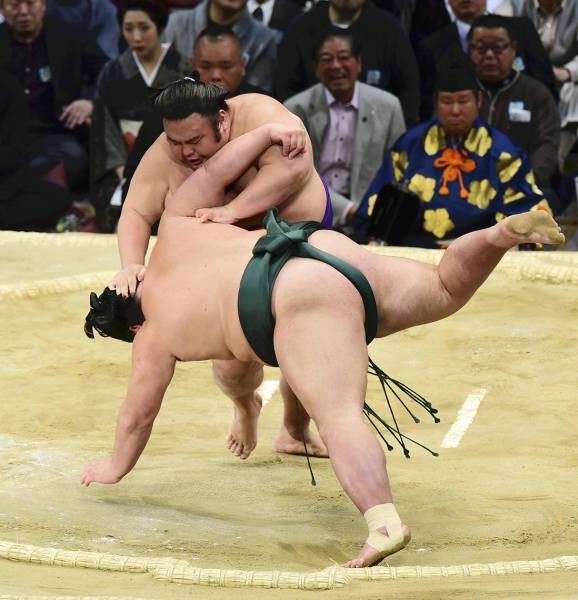 I found a sport I can enjoy. At least, I enjoy the short Highlights episode. The speed of the matches appeals to me; most American sports take too long. I mean, football is supposed to last only an hour. Why must it stretch to three or four? I know: commercials. It’s nice to enjoy an entire day’s tournament is just a 25 minute chunk of time. American football would be much more interesting if they did a cliffnotes version similar in structure to Highlights. The ESPN SportsCenter show and the like have too much insider blather and not enough game focus for me.
I found a sport I can enjoy. At least, I enjoy the short Highlights episode. The speed of the matches appeals to me; most American sports take too long. I mean, football is supposed to last only an hour. Why must it stretch to three or four? I know: commercials. It’s nice to enjoy an entire day’s tournament is just a 25 minute chunk of time. American football would be much more interesting if they did a cliffnotes version similar in structure to Highlights. The ESPN SportsCenter show and the like have too much insider blather and not enough game focus for me.
Finally, sumo gives my often-ignored masculine side a violence outlet. I don’t play violent video games anymore, and I find myself needing an outlet for my more action-focused tendencies. Strangely, watching sumo seems to ease this. Perhaps this is why so many men watch sports (not to say women don’t like sports). They give an outlet for testosterone’s more violent tendencies.
Well, the too-long-didn’t-read of this post: give sumo a try. You may find you enjoy its short, furious matches. Over time you may find yourself rooting for certain wrestlers as I did. Why I felt drawn toward some and not others stumps me. It’s like how some people feel drawn to certain teams and not others. You can watch Grand Sumo Highlights on NHK either through its website or app. You can find the schedules online, and while you are at it, you should check out its other programming. My favorite program on NHK is the 10 minute short, Dive into Ukiyoe (Please make new episodes!), and the slice-of-life focus Hometown Stories. I’m not being paid by them or anything (full disclaimer!). I find the station entertaining, educational (I’ve gotten several blog post ideas from them), and relaxing.

